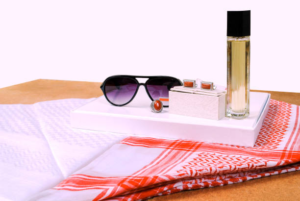The Complete Guide to CO2 Cartridges Uses, Safety, and Applications
CO2 cartridges are small, pressurized cylinders filled with carbon dioxide gas. Despite their compact size, they are widely used across a variety of industries, from recreational sports to home beverage systems. They offer a convenient and portable solution to various needs, such as inflating tires, carbonating beverages, and powering air guns. In this article, we will explore what CO2 cart ridges are, how they work, their different applications, and important safety considerations.
What is a CO2 Cartridge?
A CO2 cart ridge is a small, metal canister typically filled with carbon dioxide (CO2) under high pressure. The gas inside is compressed, allowing it to be stored in a small volume until it is released for use. These cartridges are usually made from steel or aluminum to withstand the pressure of the gas inside. When the cartridge is punctured or activated, the CO2 is released rapidly, providing an immediate source of gas for various purposes.
The most common size of CO2 cartridges is 8 grams, although they can also come in larger sizes, such as 12 grams, 16 grams, or even up to 20 grams. The size of the cartridge you need depends on its intended application.
How CO2 Cart ridges Work
The basic principle behind a CO2 cart ridge is simple: when carbon dioxide gas is compressed into a small container, it creates high pressure. The cartridge is sealed to keep the gas inside, and when you need the CO2, the container is punctured or activated in some way. Once released, the CO2 expands rapidly, transitioning from its liquid form to gas. This transition can be harnessed for a variety of practical uses.
Because CO2 cart ridges contain a compressed gas, it’s essential to handle them with care. The pressure inside can cause the canister to rupture if not used properly, so safety precautions are crucial.
Applications of CO2 Cartridges
CO2 cart ridges have numerous applications across a wide range of industries and hobbies. Let’s explore the most common uses in more detail.
1. Inflating Tires and Tubes
One of the most popular uses for CO2 cart ridges is for inflating tires, especially in sports such as cycling and motorcycling. Many cyclists carry small CO2 cart ridges as a backup to quickly inflate a flat tire in case of an emergency while on a ride. Unlike traditional pumps, CO2 cart ridges can inflate a tire almost instantly, allowing for a quick return to riding.
A CO2 inflator is used to puncture the cartridge and release the gas into the tire. Depending on the size of the cartridge and the size of the tire, a single 8-gram CO2 cart ridge can inflate a bicycle tire to the appropriate pressure. While this solution is incredibly convenient, it is a temporary fix. Once the CO2 is released, the tire will need to be reinflated with air as soon as possible for long-term use.
2. Carbonating Beverages
CO2 cartridges are also widely used in home carbonation systems, such as those used to carbonate water and make soda. These devices use the pressurized CO2 from the cartridge to infuse the beverage with carbon dioxide, which creates the characteristic fizz in carbonated drinks.
The process is simple: the CO2 is injected into the water or beverage under pressure, causing it to dissolve into the liquid. When the beverage is poured, the dissolved CO2 forms bubbles, resulting in a refreshing effervescent drink. This is how popular home soda makers, like the SodaStream, work. In this case, CO2 cart ridges are the fuel that powers the carbonation process, offering an easy way to make soda, sparkling water, and other fizzy drinks at home.
Previous article; Understanding 5×114.3 Wheels A Complete Guide
3. Air Guns and Paintball Guns
Another common application for CO2 cart ridges is in air guns and paintball guns. These cartridges provide the power needed to shoot projectiles in these recreational devices. In air guns, the CO2 cart ridge is used to propel pellets or BBs at high speeds, while in paintball guns, it propels the paint-filled balls at players in competitive or recreational games.
CO2-powered air guns are popular because they offer consistent velocity and high efficiency. The CO2 cart ridges are small enough to be carried conveniently, and they provide a powerful, quick shot. Paintball enthusiasts often use CO2 cart ridges because they are affordable, easy to use, and provide enough pressure to fire many rounds before needing to replace the cartridge.
4. Whipped Cream Dispensers
Whipped cream dispensers, which are used in both home kitchens and professional settings, often rely on CO2 cart ridges. These dispensers use pressurized gas to aerate cream and create whipped cream quickly. The CO2 cartridge is punctured, releasing gas into the cream and turning it into a fluffy, whipped texture. This process eliminates the need for hand-whipping and speeds up preparation, making it ideal for both cooking and serving guests.
While nitrous oxide (N2O) is often associated with whipped cream dispensers, some models use CO2 cart ridges. CO2 creates a different type of texture and can sometimes be preferred in certain types of culinary applications.
5. Self-defense and Safety
CO2 cart ridges are also used in some self-defense tools, such as pepper spray or other aerosol-based products. The CO2 helps propel the contents of the canister at high velocity, making it more effective for its intended purpose. In these cases, the CO2 cart ridge is used to propel the contents in a controlled and concentrated stream, ensuring that the product works effectively in a self-defense situation.
In the case of pepper spray, CO2 cart ridges allow for quick, accurate, and forceful delivery of the irritant. The CO2 cart ridge is activated by pulling the trigger, releasing the gas that propels the spray toward an assailant.
6. Diving and Other Specialized Uses
In the world of diving, CO2 cart ridges are sometimes used in buoyancy control devices (BCDs). These devices are worn by scuba divers to help manage buoyancy in the water. A CO2 cartridge can be used to rapidly inflate the BCD, allowing the diver to ascend or adjust their position in the water more quickly.
Additionally, CO2 cart ridges have been used in emergency rescue devices, inflating life vests or life rafts when needed. Their compact size and quick-release nature make them ideal for emergency situations, where rapid inflation is crucial for survival.
Environmental Considerations
While CO2 is a naturally occurring gas in the environment, the widespread use of CO2 cart ridges raises some environmental concerns. CO2 is a greenhouse gas, and its release into the atmosphere can contribute to global warming. However, the amount of CO2 released from a single cartridge is relatively small compared to other sources of emissions.
In addition, many manufacturers of CO2 cart ridges are working to develop more sustainable options. Some companies are developing refillable CO2 cylinders, which reduce the need for disposable cartridges and promote a more eco-friendly solution. Recycling programs for CO2 cart ridges also exist in some areas, allowing users to properly dispose of or recycle the cartridges after use.
Safety Considerations
Handling CO2 cartridges requires a certain level of care to avoid accidents. The high-pressure nature of CO2 means that improper handling can lead to dangerous situations. Here are some key safety considerations:
- Avoid direct contact with the gas: CO2 is a colorless, odorless gas, and while it is non-toxic, it can displace oxygen in enclosed spaces. Always use CO2 cart ridges in well-ventilated areas to prevent asphyxiation.
- Do not puncture or heat the cartridge: Never attempt to puncture or heat a CO2 cart ridge with a flame or other sources of heat. The pressure inside the cartridge can cause it to explode, resulting in injury.
- Store in a cool, dry place: CO2 cart ridges should be stored in a cool, dry place, away from heat sources or direct sunlight. Extreme temperatures can cause the cartridge to rupture.
- Proper disposal: Once a CO2 cart ridge is empty, it should be disposed of properly. Many places have recycling programs that accept empty cartridges, so check with local authorities or recycling centers for guidance on how to dispose of them safely.
Conclusion
CO2 cartridges are incredibly versatile and useful tools, with a wide range of applications, from inflating tires to carbonating beverages and powering air guns. Their compact size and portability make them ideal for a variety of industries and hobbies. However, they also come with important safety considerations, such as proper handling, storage, and disposal.
Whether you’re a cyclist, a home soda maker, a paintball enthusiast, or someone who uses CO2-powered tools for self-defense, CO2 cart ridges provide a convenient and efficient solution to your needs. By understanding their uses and adhering to safety guidelines, you can make the most of this small but powerful tool.











Post Comment